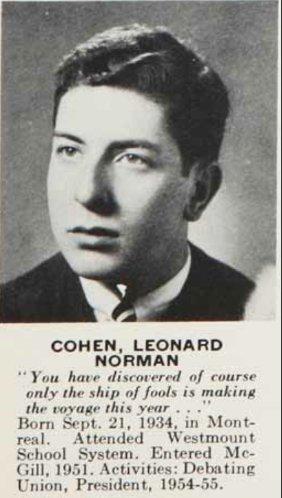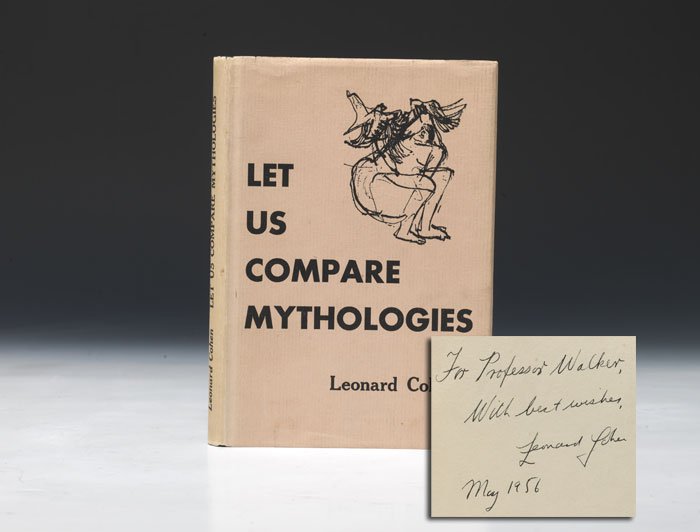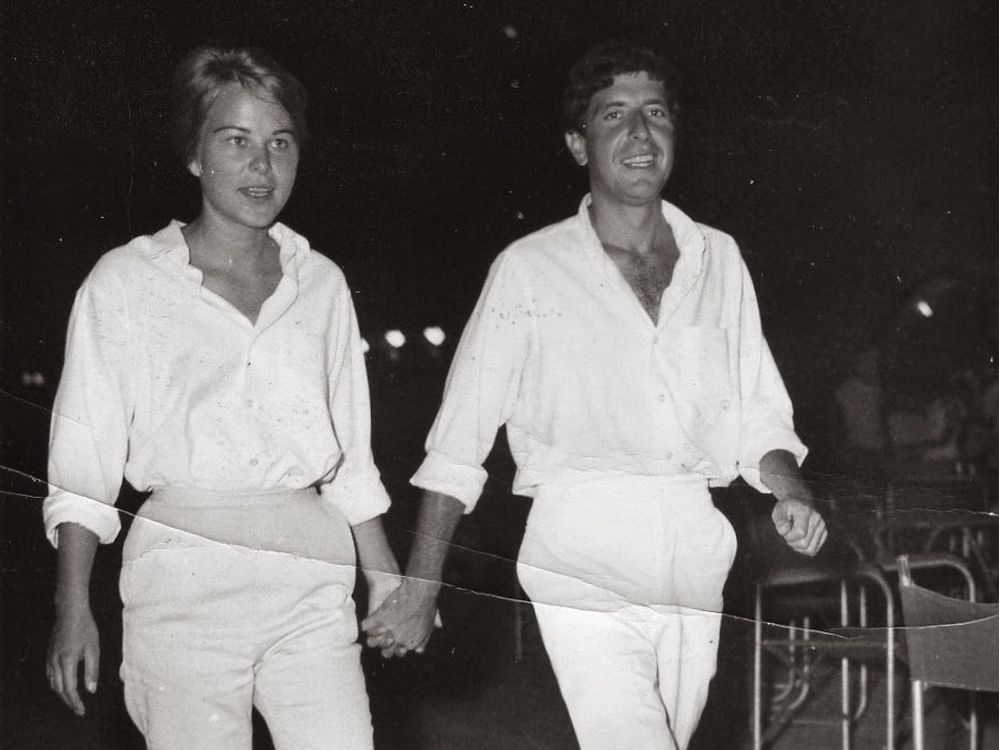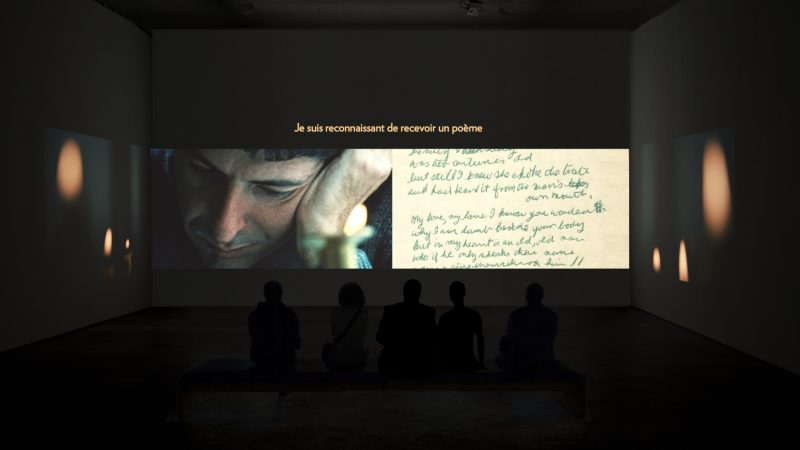Most know Leonard Cohen as the first vocalist of the iconic “Hallelujah.” Others may know him as a poet, a musician, a novelist, or a songwriter. Some may even know him as a painter. And that’s exactly how he would have wanted it. He is a jack-of-all-trades, who deftly evades any labels we may try to ascribe to him, preferring instead to lurk in the shadows of changeability with a fickle smirk.
Leonard Cohen’s artistic career was prolific, to say the least. This in itself makes it difficult to attribute any strict epithet to him or his work. Over the course of his life, Cohen published 12 books—10 poetry collections as well as two novels, Beautiful Losers and The Favorite Game. The publishing house McClelland & Stewart also plans to bring out a final posthumous anthology, The Flame, in October 2018. Completed in the last months of Cohen’s life, the collection will be made up of previously unpublished poetry, notebook excerpts, and illustrations by Cohen himself. Writing was Cohen’s initial calling and he only turned to music later in life: He released his first album, Songs of Leonard Cohen (1967), at age 33. He had already enjoyed some degree of public acclaim for his four published poetry collections and his first novel. Between 1967 and 2016 he then released 25 albums, and collaborated on tracks with other accomplished artists such as
The amplitude of the themes Cohen covers in these works contributes to the haziness of his image. His literature and music cover a myriad of topics including faith, politics, sexuality, and death. He blends these themes together, discards some of them for periods and then returns to them, allowing him to avoid restricting himself to a single creative mandate.
Norman Ravvin, professor and Jewish Studies Graduate Program director at Concordia University’s Centre for Interdisciplinary Studies in Society and Culture, observed this constant thematic revisionism in relation to Cohen’s approach to religion.
“[In his collection Flowers for Hitler, Cohen writes about] the Jewish sense of identity as it relates to the Holocaust more than [...] anything directly religious [...],” Ravvin said. “So [the theme is] marked, and then it’s gone, and then it’s marked again in a new way [....] The phenomenon operates that way.”
“I heard of a man who says words so beautifully” from “Poem,” Let Us Compare Mythologies
Cohen started to gain artistic visibility very early in his career. During his time as an undergraduate student at McGill University in the early 1950s, he won the Chester MacNaghten Literary Competition for his poems “Sparrows” and “Thoughts of a Landman.” In 1954, he published his work for the first time in the literary magazine CIV/n, alongside that of editorial board members, Louis Dudek and Irving Layton. Cohen graduated with a Bachelor of Arts in English Literature the next year. The connections Cohen made at McGill enabled him to publish his own poetry collection, Let Us Compare Mythologies, in 1956. He was able to do this so shortly after having graduated, with the help of Dudek and his McGill Poetry Series’ financial support.
Brian Trehearne, Professor of English Literature at McGill, recounted the apocryphal tale of Dudek’s reaction to Cohen’s manuscript.
“Supposedly, Dudek, carrying a sheaf of papers in his hand, stopped him in the hallway of the Arts building and swatted him with the papers in order to knight him an official Canadian poet,” Trehearne said.
The work’s critical reception was less effusive than that of its publisher but still positive, garnering the praise of prominent figures such as Canadian literary critic and theorist Northrop Frye.


“How can I begin anything new with all of yesterday in me?” from Beautiful Losers
Cohen’s time at McGill was formative: He received a quality formal literary education, and the relationships he formed with Dudek and Layton were especially pivotal in the creation of his first manifestation of collected works. Dudek and Layton belonged to a larger circle of Canadian modernists who his mentors introduced him to, including poets like F. R. Scott.
Trehearne pointed out the influence of these relationships on Cohen’s first body of work.
“In Let Us Compare Mythologies, you have a young Cohen who is still very much wanting to join the Canadian modernist cohort,” Trehearne said. “It’s got its own curious intonations of course [....] You have a lot of lyric. You have that strange sort of morbid obsessiveness with death and links between sex and death, which in Cohen are so central. But I read it as a work where he’s still imagining that the way forward is to be a Canadian modernist poet.”
However, Trehearne noted that Cohen quickly started to express a desire to break away from the modernism he first experimented with in the beginning of his career, and the poet who first introduced him to the genre: Louis Dudek.
“He’s probably thinking ‘Am I a poet? Is that what poets are?’” Trehearne explained. “[Becoming a Canadian modernist poet just isn’t] going to satisfy Leonard Cohen for long. It’s not a big enough pond. I think that Cohen [was] someone who [was] quite quickly breaking the mold that Dudek had laid out for him.”
After his poetry collection came out, Cohen made two attempts at graduate studies: A semester at the McGill Faculty of Law and a full year at the Columbia University School of General Studies—both of which he abandoned. His transition away from higher education also reflected his move away from the rigour of the Canadian modernists surrounding him, which he had begun to resent. He discarded the more traditional poetic persona that shines through in his earliest work and decided to reinvent himself and his work.
“Let Us Compare Mythologies shows him willing to adhere to the examples he was given at McGill, in Montreal of what poetry did,” Trehearne said. “But I think he moves past it very quickly in two ways. He’s beginning to perform in jazz clubs in the mid-’50s, he’s hanging around Montreal. He goes to New York [for graduate school at Columbia, which Dudek also attended] and that doesn’t quite work for him. And then it was off to London, and then Greece, and the Cohen story we know begins.”
“It’s not the laughter of someone who claims to have seen the light” from “Hallelujah,” Cohen Live
The Cohen story we know is really only the one Cohen wants us to know. Even in “Hallelujah,” a work deeply ingrained in popular culture, the artist’s indecisiveness crops up constantly.
Cohen spent five years working on a total of 80 verses, but told Bob Dylan it had only taken him two years out of embarrassment. He first selected just seven verses to include in his studio rendition featured on the album Various Positions, and then later alternated with different verses during performances. His 1994 live album for instance only features four verses, which differ in varying degrees from the 1984 studio track.
Every iteration Cohen performed or recorded changed the song’s meaning, and reflects the artist’s particular mindset in that moment. In some versions, the song ends on a positive note, with Cohen humbly “[standing] before the Lord of Song with nothing on [his] tongue but Hallelujah,” whereas in others he feels more downtrodden, he is “not somebody who’s seen the light, it’s a cold and it’s a broken Hallelujah.”
"It explains that many kinds of hallelujahs do exist, and all the perfect and broken hallelujahs have equal value,” Cohen once famously said.
As years went by, Cohen constantly expressed his displeasure with the song: He told the press that the song “[doesn’t] have a good chorus” and even suggested that the song never be performed again.
“I was just reading a review of a movie [...] that uses [‘Hallelujah,’]” Cohen said in an interview with American conductor, David Whitwell in 2010. “And the reviewer said, can we please get a moratorium on ‘Hallelujah’ [....] And I kind of feel the same way.”
This was in 2010, yet he performed “Hallelujah” live up until his last concert in 2013. Even in his suggestion to finally put the song to bed he could not remain decisive.
“If you are the dealer I’m out of the game” from “You Want It Darker,” You Want It Darker
Even leading up to his death, Cohen appeared in full control of his image and of the imminent approach of the end of his life. In the months that directly preceded his passing he curated content which seemed to foreshadow his coming death. His final album, You Want It Darker, which came out less than a month before he passed away, feels calculated. It echoes his own prediction that he would follow his former lover, Marianne Ihlen, into death.

This image, projected in the months leading up to November, is one of the many personas Cohen conveyed to the public in his life. But in death, he no longer has control over the new renderings of his character, which seem to be cropping up all over.
In the past year, two separate murals of Cohen have gone up in Montreal, and in this coming month, both an homage concert to the singer-songwriter and a Musée d’Art Contemporain de Montréal (MAC) exhibition will take place. Both events feature artists’ takes on Cohen in the form of song and other multimedia art installations.
Kara Blake, a Montreal director, editor, and compositor, is one of the artists whose work is included in the MAC’s upcoming exhibition, Une brèche en toute chose/A Crack in Everything. Her installation piece, The Offerings, which she describes as a deconstructed documentary, is made up of various archival images and clips of Cohen throughout the years projected onto five screens.

“I wanted to make a piece that was Cohen on Cohen basically,” Blake said. “The through line is his voice in collected and edited together bits from many different interviews over his career, and then I sort of illustrated what he’s talking about with various visuals of him from TV and film and also there’s a number of images of his writing [from the University of Toronto’s Rare Books collection].”
Although Blake’s piece uses Cohen’s words and voice, it still projects a vision of the icon specific to the artist through editing and the superimposition of visuals: A new Cohen persona which belongs to Blake.
“He had that certain something from a very early age where he felt he was going to leave the world with something,” Blake said. “And I definitely think he has. My piece [tries] to collect some of these gifts that he’s left us with in these various formats his words, his music, his writing.”
While Blake views her project and the MAC exhibition as a whole as a celebration of Cohen’s legacy, Ravvin does not view such posthumous projects in a favourable light.
“McClelland & Stewart has [the rights] to the books, but [not] the records,” Ravvin said. “But if they can make the collection of poetry include the lyrics, which they’ve increasingly done, [...] they introduce a whole new audience for their books who wouldn’t necessarily otherwise read Cohen’s poetry. I kind of resent it. I don’t view it as anything realistic in an audience, it’s something that a publisher creates as a mark. And I don’t know if it’s been successful, and I don’t know if readers when they pick up these ‘Collected Works’ whether they really care [....] The thing becomes a vaguer project in some way.”
Over the course of his career Leonard Cohen presented different facets of his personality and creativity to the public. From a semi-conforming modernist poet to an indecisive but iconic singer-songwriter, there is no single Cohen image. However, despite carefully curating the persona he projected in his lifetime and particularly in the months leading up to his death, Cohen no longer has any control over his public profile. Instead, stakeholders such as artists and commercial representatives now control a large part of Cohen’s contemporary perception.

